How to Make the Most Out of Your Engagement Ring Budget
When it comes to shopping for an engagement ring, let's be real: no matter how many times someone says you need to focus on color, carat, cut, and clarity, the first thing that comes to mind is actually the b-word...budget.
But don't worry, we've got you covered! Kaeleigh Testwuide, founder and owner of The Diamond Reserve, is here to give us the ultimate expert breakdown on how to get the most out of your engagement ring budget!
When beginning the engagement ring shopping process, the first thing you need to do is set your budget. There are so many myths that it should be a certain percentage of your salary, but the reality is that your budget needs to make sense for you. You don’t need to break your bank to buy a timeless engagement ring that will wow your significant other.
Once you have set your budget, the next thing you need to consider is if you would like to purchase a lab-grown diamond or a natural diamond. If you are considering purchasing a lab-grown diamond, this is something you should discuss with your significant other. Lab-grown diamonds are acceptable to some, but to others, having a natural diamond is a high priority.
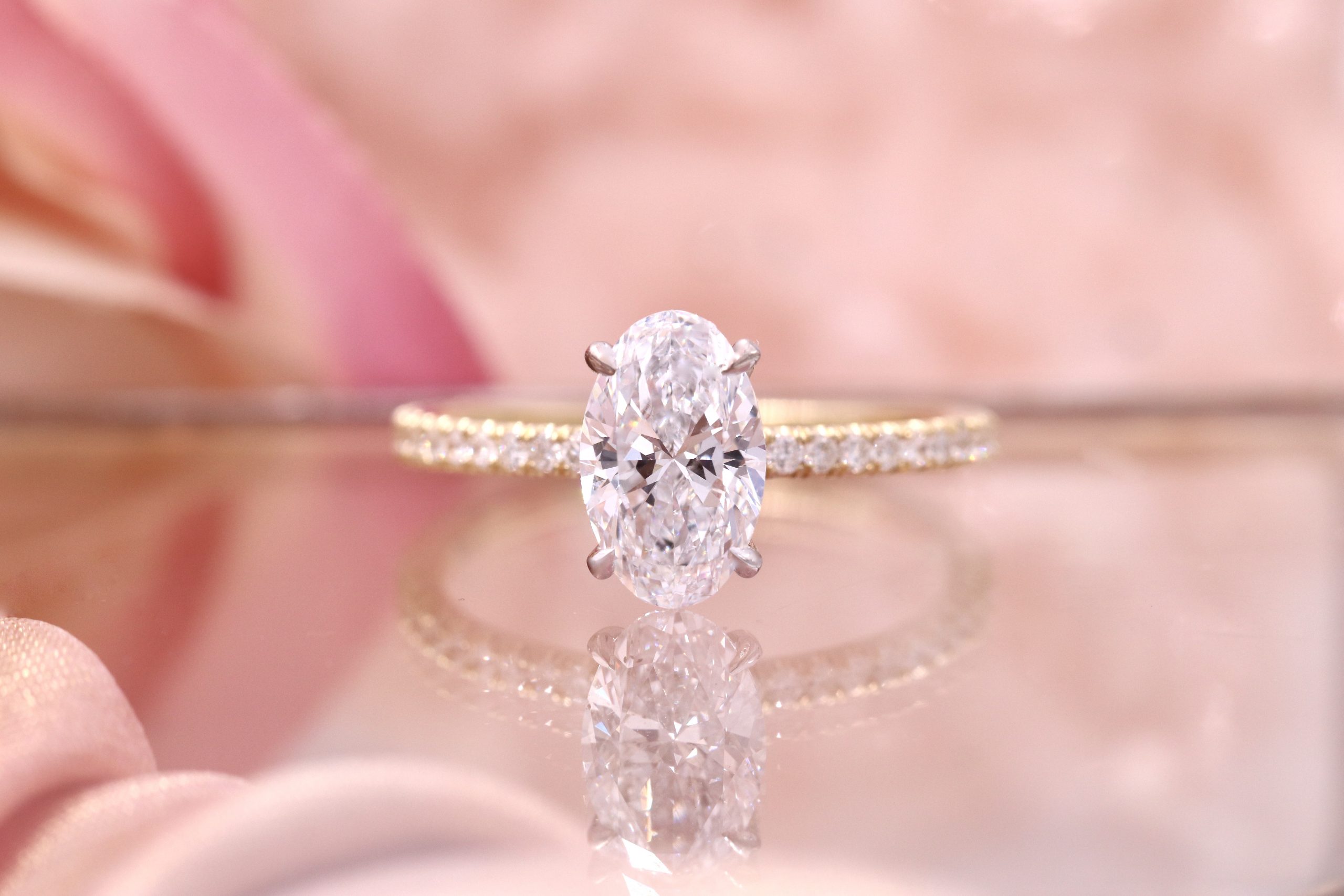
There are many different ways to prioritize the 4 Cs, and in order to establish what quality factors in your diamond matter most to you, you need to get educated.
We recommend at least visiting three jewelers. Take note of which jeweler takes the time to educate you, is genuinely interested in understanding what you are looking for, and doesn’t try to pressure you into making an impulsive purchase. Don’t be afraid to visit GIA.edu to do additional research on the 4 Cs, ensuring you check all your quality boxes before making this BIG purchase.
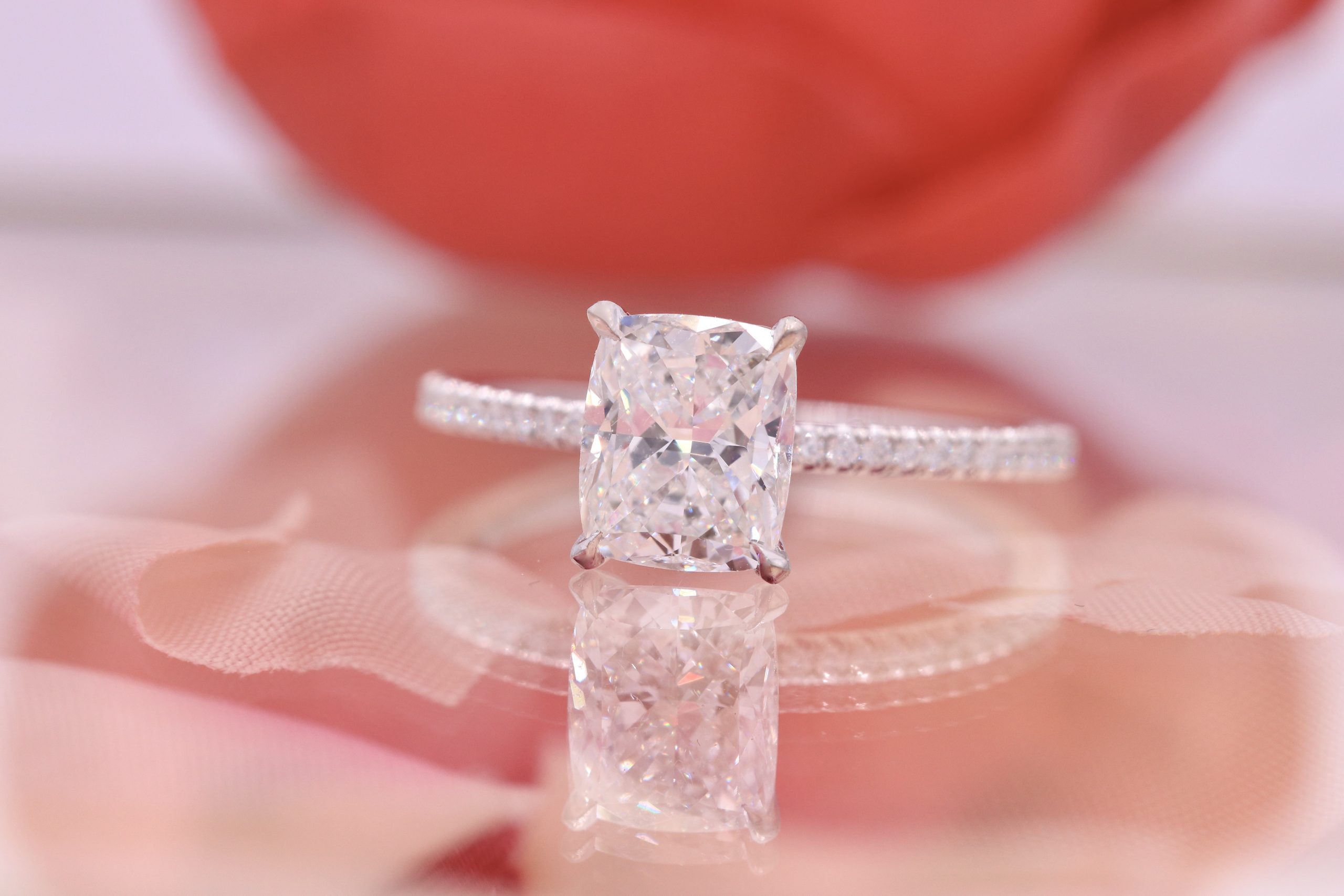
The first C stands for "cut." Diamond experts often consider this to be a quality factor that you never sacrifice, as this refers to the sparkle of the diamond. If you are purchasing a round diamond, you want to know what the cut, polish, and symmetry grade of the diamond is. If you are buying a fancy-shaped diamond (any shape other than round), you want to know what is the polish and symmetry grade of the diamond.
These quality factors are all graded independently with the same terminology: excellent, very good, good, fair, and poor. We only recommend purchasing a diamond graded excellent or very good for any of these factors. People love diamonds for how they sparkle! This is not a quality you want to sacrifice and potentially end up with a dull diamond with a lot of black shadows.
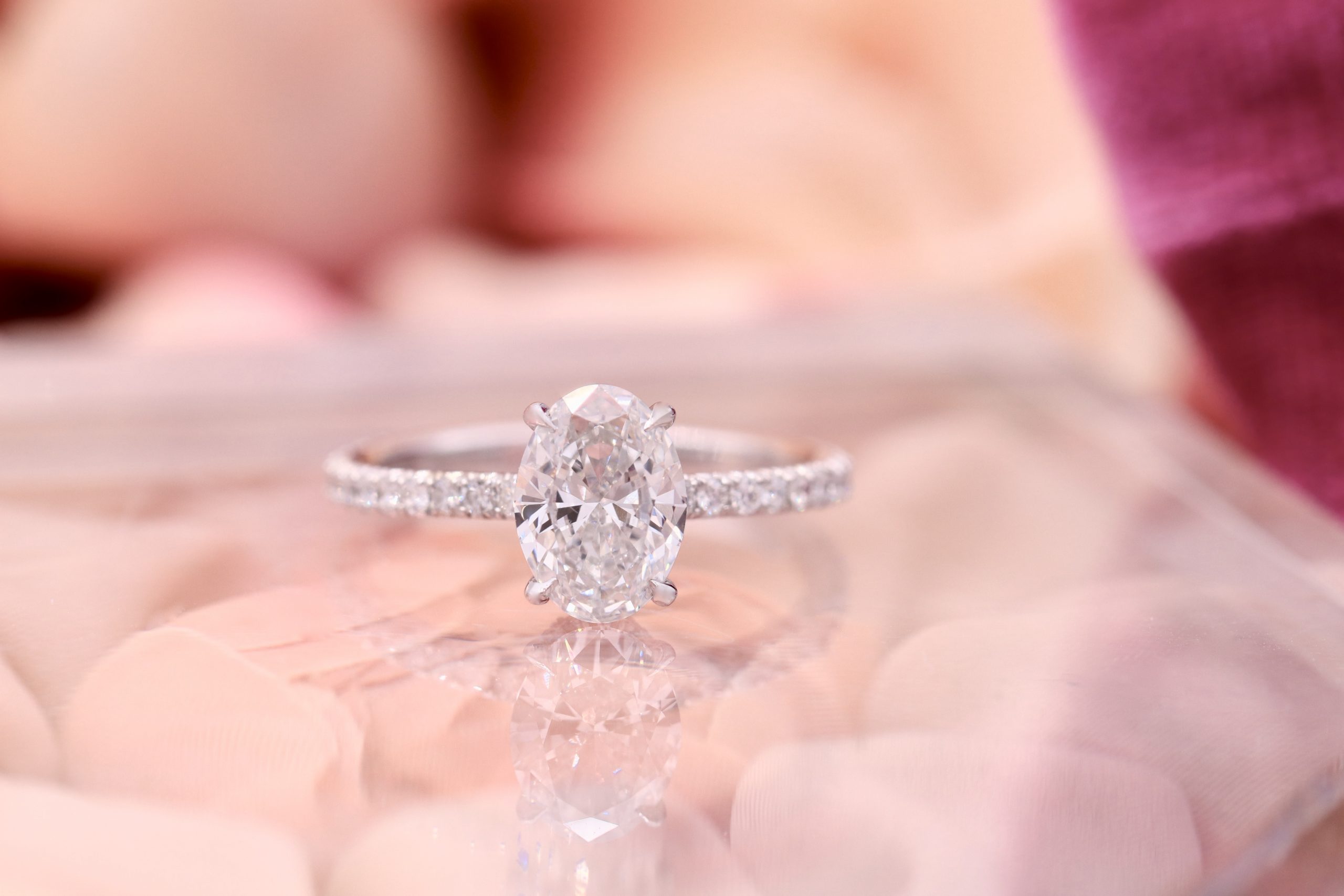
The second C stands for carat. Carats is a term used for the diamond size in mass. Carat weight is something we see a lot of couples discuss prior to purchasing. There is a big difference in price and appearance between a 1-carat diamond and a 2-carat diamond. It is best to get an understanding of what your significant other has their heart set on. This can allow you to understand how to prioritize the other 4 Cs to attain the desired carat weight.
If your partner wants a 2-carat diamond, depending on your budget you may need to sacrifice on color and clarity to obtain a 2-carat diamond. Often we hear a person say “I don’t care about the quality, I just want a big diamond,” prior to even understanding quality diamonds or viewing diamonds.
If your significant other says this to you, you still need to make sure the diamond you are buying carries overall good value, and you aren’t sacrificing too much on the other Cs just to say you bought a 2-carat diamond. Often we see gentlemen purchase a 1.80 or a 1.90 carat to get that bigger look, but also allotting a portion of the budget to make sure it is still a beautiful, eye-appealing diamond.
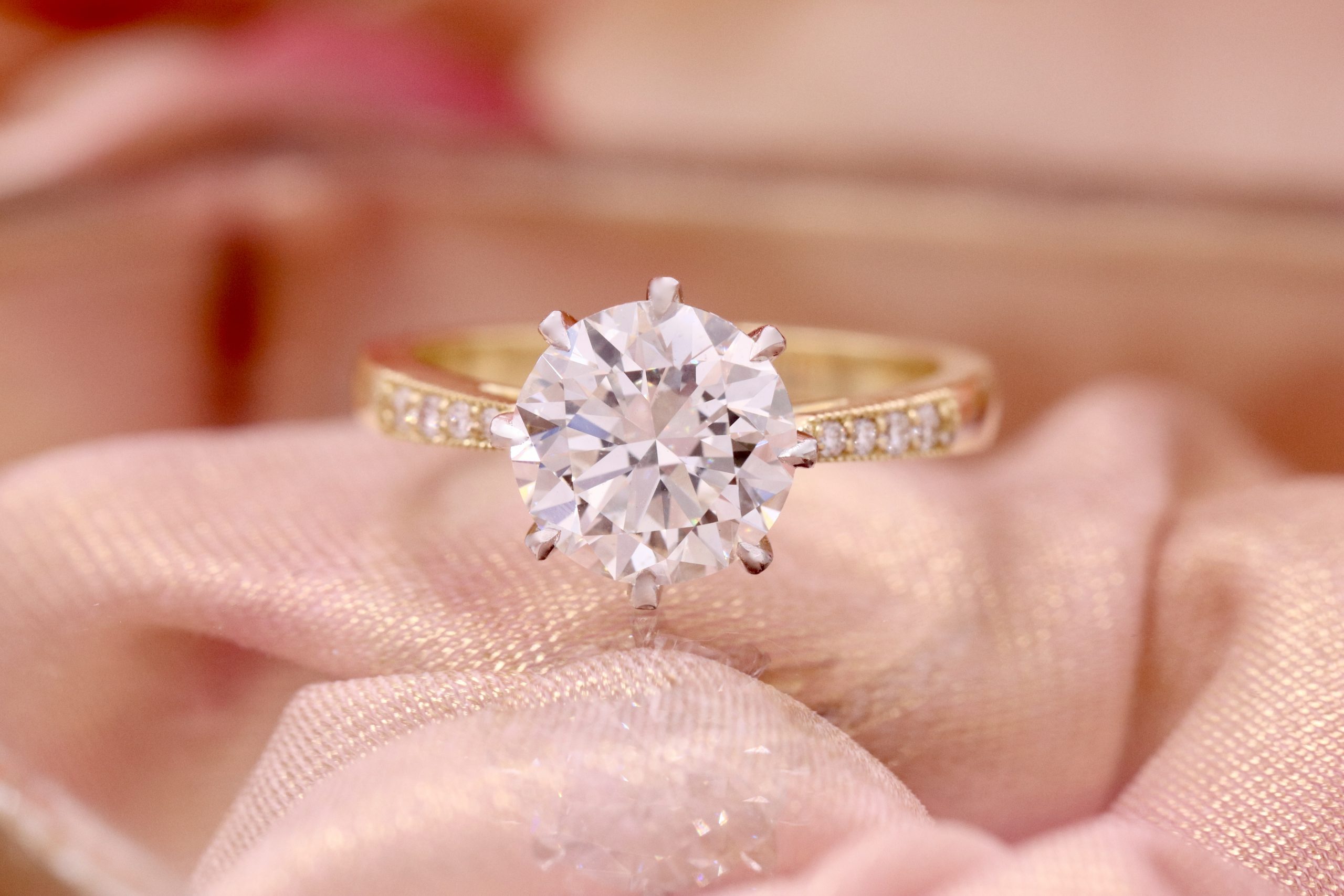
The third C stands for color. The higher the color grade, the more perfectly colorless like that of a drop a pure water a diamond is. The lower down the color chart you go, there can be hues of yellow, brown, or sometimes even greens throughout the entire diamond. The color chart starts at D; D being a perfectly colorless diamond and then goes all the way down to Z. We highly recommend staying between D-J for an engagement ring diamond, and for some of the fancy shapes, only purchasing D-H in color.
How do you decide what is the right color for your budget? The first step is to actually view a lineup of different color graded diamonds. We see some people be more sensitive to color than others. If your significant other has their heart set on a certain carat weight, you may find you need to sacrifice a bit of color to obtain that carat weight, but that doesn’t mean you aren’t buying an incredible diamond.
It is important to understand if your significant other values quality or carat weight. Once you view diamonds, you may decide this is a decision you feel comfortable making on your own, or you might find your partner should look at some different quality diamonds so they can develop their taste in quality before jumping to conclude they only care about size.
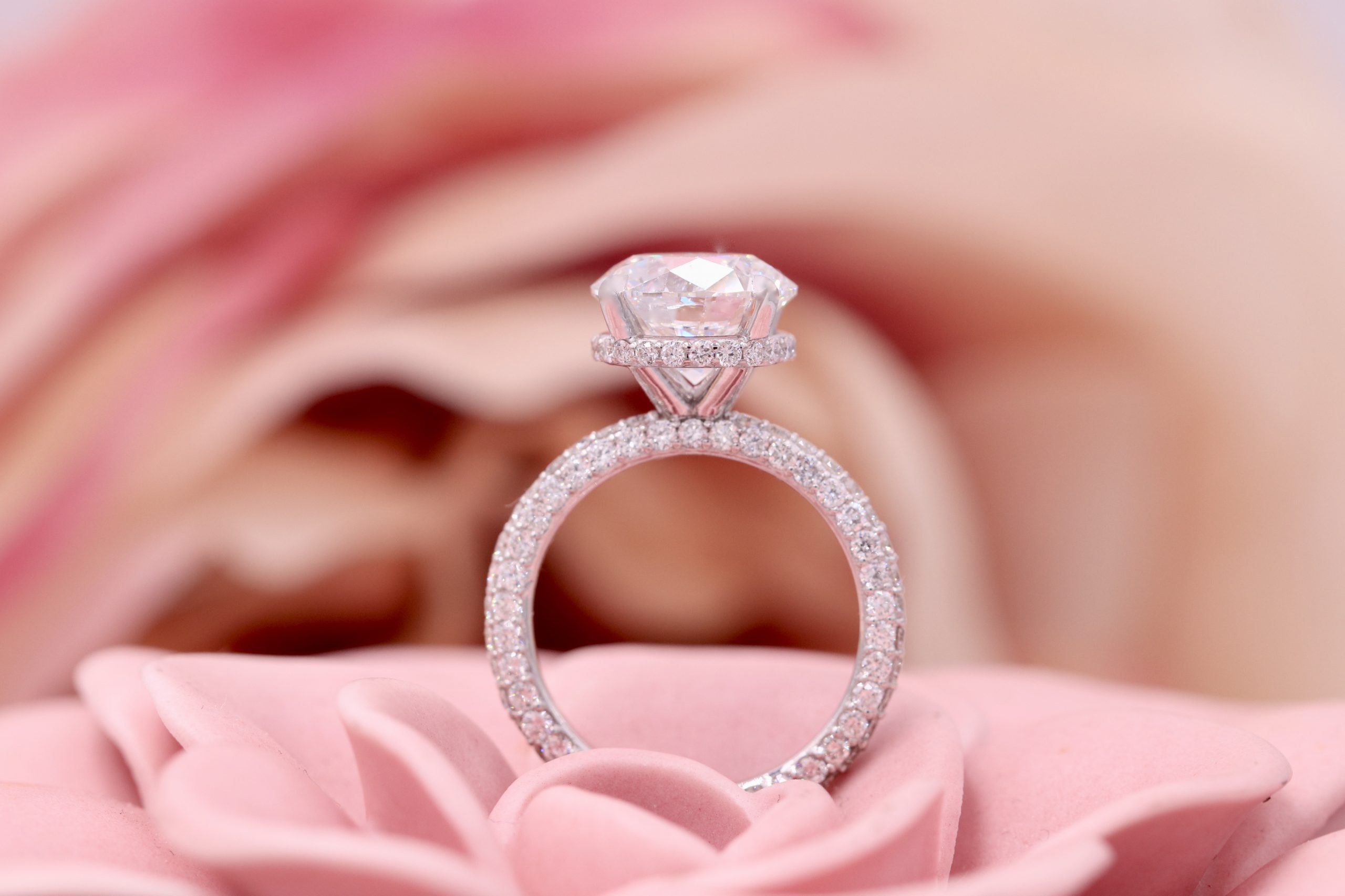
The fourth and final C stands for clarity. Clarity refers to the natural inclusions that occur in a diamond when it is formed in the ground. This could be a black carbon inclusion or a white crystal inclusion. The reality is that most people do not buy a perfectly flawless diamond with no inclusions as they are extremely expensive.
What is important is that you purchase a diamond that does not have an inclusion that is visible with the naked eye. We see the sweet spot on the clarity chart be VS2 (very slightly included 2) and SI1 (slightly included 1). Purchasing in this grading area allows you to put more of your budget towards carats and color which is more eye-catching as long as you buy a diamond that does not have any visible inclusions.
You must be very careful though purchasing in these regions. Make sure you are working with a jeweler you trust, and before purchasing, view the diamond under a loop. Once you have spotted the inclusions, then look with the naked eye. If you can then see them, that diamond is not for you.
It is important to understand that just because two diamonds are graded a certain clarity, does not mean they are equal. One diamond may have a black inclusion dead center of the table whereas the other may have a crystal inclusion hidden in the facet on the crown angle making it a better SI1.
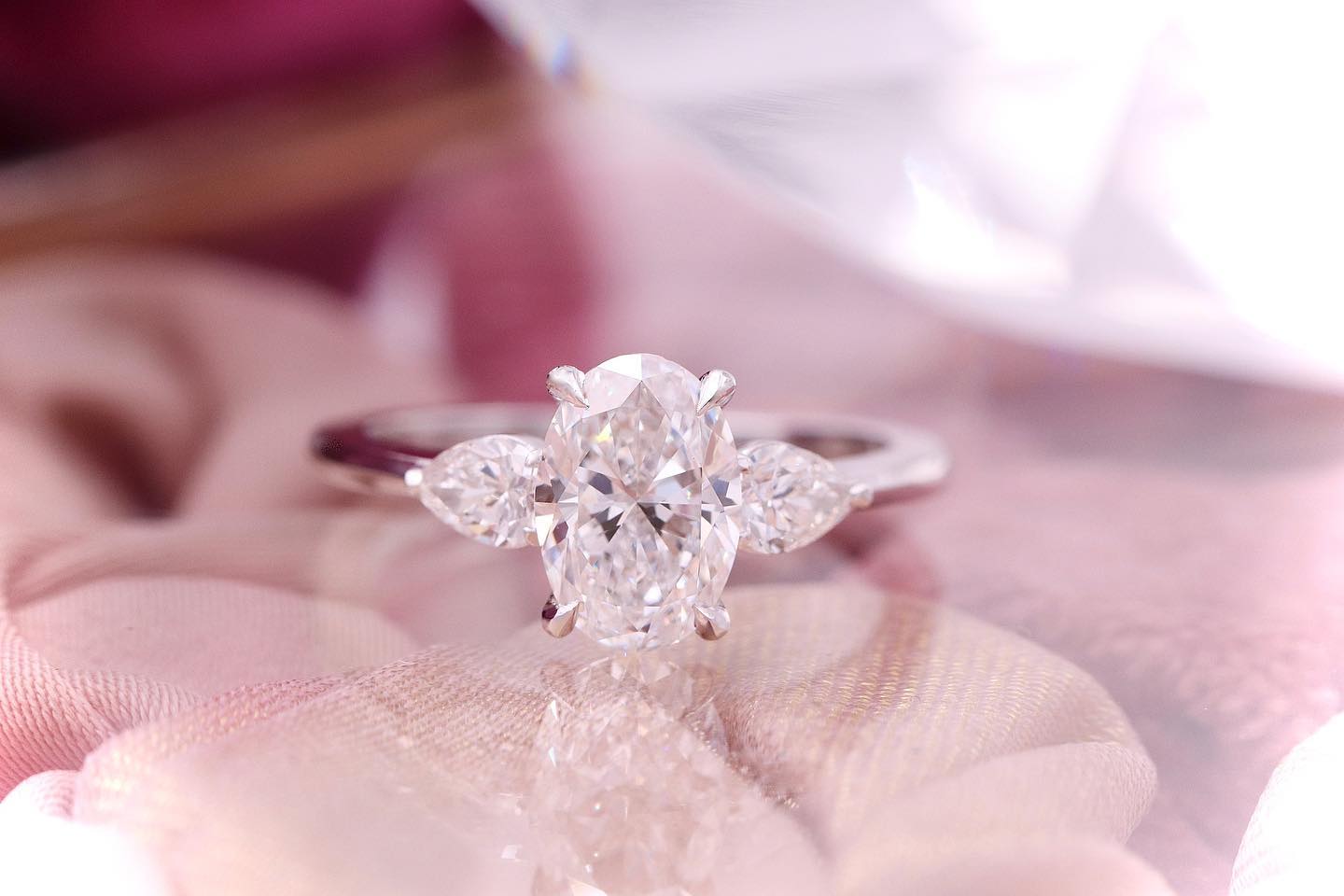
Most people value the 4 Cs by cut, carat, color, and clarity, but there are some people who value color and clarity over carat weight. The best way to establish how you value these diamond characteristics is by viewing diamonds side by side.
Whatever you do, don’t settle! Find a jeweler who will take time to educate you and help you define how you value the 4 Cs of diamonds. Once you have this defined, you can successfully and confidently select the diamond that fits your budget capitalizing on the qualities that matter most to you!
Feeling confident now about shopping for your engagement ring now that Testwuide has told all? We thought so! Head to The Diamond Reserve to see more of their engagement ring options!